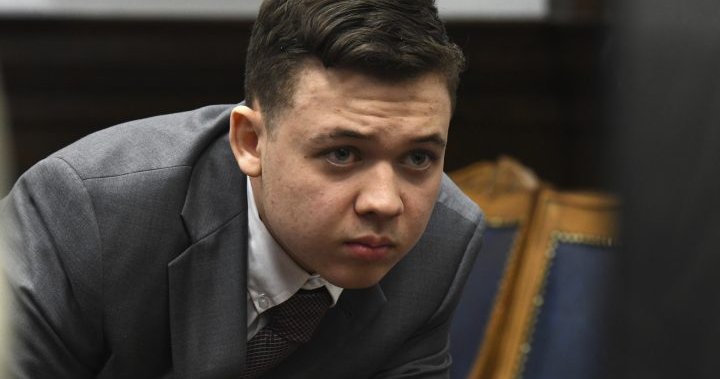
Kyle Rittenhouse: Key moments after two-week murder trial nears end
Global News
Rittenhouse, who was 17 at the time, is charged with multiple counts including intentional and reckless homicide, as well as possession of a dangerous weapon by a minor.
Kyle Rittenhouse testifying about the night he shot three men on the streets of Kenosha – sobbing and seemingly unable to continue as he spoke about the first shooting – was among the most compelling moments in his two-week murder trial.
It might also have been the most effective part of the three-day defense case, potentially swaying any jurors inclined toward sympathy for the 18-year-old who has claimed self-defense for killing two men and injuring one.
Prosecutors say the primary cause of the violence was Rittenhouse’s decision to go to Kenosha with a rifle in a city wracked by protests after a white police officer shot a Black man, Jacob Blake.
Rittenhouse, who was 17 at the time, is charged with multiple counts including intentional and reckless homicide, as well as possession of a dangerous weapon by a minor. He and the men he shot are white.
Here is a look at how the presentation went for the defense, which rested its case Thursday:
The defense’s most consequential decision was to put Rittenhouse on the stand to let him tell jurors what was going through his mind when he opened fire.
Andrew Branca, a Colorado lawyer who wrote the book “The Law of Self Defense: Principles,” said on his blog about the trial that the decision was “a high-stakes bet by the defense, and one that always has risk of snatching defeat from the jaws of victory.”
Defendants claiming self-defense don’t have to testify. But there’s pressure on them to do so since what they were thinking when they used lethal force is so central to determining guilt.











